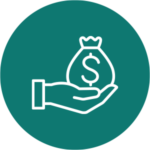The dentistry divide – just as technology continues to change every aspect of the world around us, it has, and will continue to revolutionize the dental world and improve dental care. The first step to crossing the digital dentistry divide is to embrace this non-negotiable fact.
“Your life does not get better by chance, it gets better by change.” – Jim Rohn
Spoiler alert…Substitute “dental practice” in place of “life” in the quote above, and the theme of this article has just conveniently summarized.
Are you practicing dentistry using the same techniques you did ten to twenty years ago?
Do you expect to be practicing dentistry in an identical manner ten to twenty years in the future?
Before we discuss the benefits of taking the leap to digital, let’s make sure we are working from the same definition.
What is Digital Dentistry?
Any dental technology or device that incorporates digital or computer-controlled components, for both restorative and diagnostic purposes in contrast to utilizing mechanical or electrical components alone.
Advantages of Digital Dentistry
- Efficient A more streamlined process while increasing the efficient use of resources in terms of time and cost.
- Accurate More precise diagnoses and treatment; removes expensive rework, saving time and money.
- Value/Patient Experience Improved outcomes requiring fewer patient visits which enhances the patient’s perception of care.
You Can’t Cost Cut Your Way to Prosperity
I often talk to dentists who focus on overhead percentages and expenses when looking to increase profitability. While these things are important, remember, you can’t cost cut your way to prosperity!
The best way to control/lower overhead percentages is to significantly increase production. Increasing top line numbers without corresponding increases in overhead and expenses translates to financial benefits. Digital dentistry accomplishes this goal for you.
“Change is inevitable. Progress is optional.” – Tony Robbins
How Dentistry has Gone Digital
- CAD/CAM and intraoral imaging, both laboratory and clinician-controlled
- Photogrammetry-based intraoral scanning (software-driven) caries diagnosis
- Computer-aided implant dentistry, including design and fabrication of surgical guides
- Digital radiography, intraoral/extraoral, along with cone beam computed tomography (CBCT)
- Electric and surgical implant handpieces
- Occlusion and TMJ analysis and diagnosis
- Photography, extraoral/intraoral
- Soft and hard tissue lasers
- Practice and patient record management, including digital patient education
- Shade matching
- More procedures in the same amount of time =
Greater production per hour
- Increasing production and doing less rework =
Higher profitability
- Saving your patient time, reducing inconveniences =
Increased perception of value and case acceptance
Why go Digital
- Becoming the accepted (and eventually legal) standard of care
- Ease of use procedures with increased efficiency and accuracy
- Offers measurable ROI (return on investment)
- Adds an element of excitement, creating new drive and refreshed happiness in a practice
- Provides higher quality of care for patients
- If embraced and relevant, the value of the practice is positively impacted when time to sell
Questions to ask…
Are we willing to dedicate the necessary time and effort needed to learn new technology and continue advancing?
Will my team embrace and utilize it?
If now is not the right time for me to embrace digital dentistry…then when?
The Most Common Mistakes When Going Digital
FAILURE to excite the dental team about new technology
FAILURE to provide robust training
If you focus on income growth drivers and increase the number of patients, procedures per patient and fee for procedure, you can significantly increase your profitability.
Digital dentistry accomplishes this, allowing you to offer higher value dentistry in less time. Since time is not a commodity you can create, your only option is to increase production per hour. This significantly increases the relation between expenses and overhead and places you on your path to long-term growth and prosperity.
Adopt a Growth Mentality
If the goal is to maximize practice profitability, here’s how you can crunch the numbers…
- NET PROFIT
Income – Expenses
- EXPENSES
Variable + Fixed
- INCOME
Number of Patients X Income per Patient
A dentist will often say to me, “I can’t go digital, my CPA said it’s not in the budget.” How can growing your business and becoming more profitable not be in the budget?
This leads me to think your CPA may not be a dental specialist. A specialized dental CPA will assess the cost of equipment, the payment terms, the expected increase in production, and cash flow—as well as the overall impact on profitability when making a recommendation.
I want to give you a few examples of potential increases in collections and net income that can be achieved.
Furthermore, the charts below show the results from several practices we work with, before and after two years as a result of their conversion to digital—including CAD/CAM and cone beam (CBCT) technology. You can’t dip your toe into the digital dentistry pool, you must dive in head first!
Before & After Digital Dentistry
Net Collection
| Practice | Before Purchase | After Purchase | % Increase |
|---|---|---|---|
| A | $1,295,000 | $1,633,000 | 28% |
| B | $982,000 | $1,885,000 | 92% |
| C | $1,999,000 | $2,593,000 | 30% |
Net Income
| Practice | Before Purchase | After Purchase | % Increase |
|---|---|---|---|
| A | $476,000 | $850,000 | 79% |
| B | $266,000 | $465,000 | 75% |
| C | $598,000 | $908,000 | 52% |
Written by Doug Fettig, CPA, MB, Dental Business Consultant, Aldrich CPAs + Advisors
Doug Fettig, CPA, MBA Dental Business Consultant, Aldrich CPAs + Advisors
Doug has over two decades of experience as a CPA and a finance professional, providing him the unique ability to understand dentists’ needs and help them grow efficient and profitable practices. His insight allows him to effectively collaborate and communicate business concepts to dental practices while strategically addressing tax, investment and retirement planning needs.
“Here’s a little tip to impress your friends at the next cocktail party; the “Godfather” of digital dentistry is French Professor Francois Duret. He invented the CAD/CAM in 1973! So for those considering going digital, they’ve had 45 years to work out the kinks.” – Doug Fettig
Category: Technology
Back to Articles




